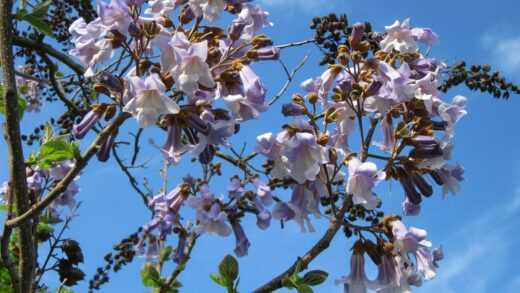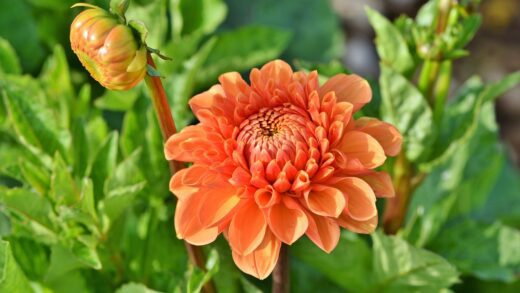The successful establishment of a thriving colony of wood anemones begins with a thoughtful approach to planting and an understanding of its preferred methods of propagation. This enchanting woodland perennial, celebrated for its delicate, star-like flowers, brings a sense of wild grace to the early spring garden. To ensure its success, one must replicate the conditions of its native woodland habitat as closely as possible. The timing of planting is crucial, as is the careful handling of its fragile rhizomes. Propagation, while a patient endeavor, can be incredibly rewarding, allowing you to expand your collection and share this beautiful plant with others. Whether you are starting with newly purchased rhizomes or dividing an existing clump, the process requires a gentle touch and an appreciation for the plant’s natural life cycle.
Planting wood anemones is best undertaken in the late summer or early autumn, which gives the rhizomes ample time to establish a root system before the ground freezes. This is the period when the plant is dormant, making it the ideal time to handle and transport them without causing stress. The rhizomes are typically sold in a dry, dormant state and look like small, dark, and somewhat gnarled twigs. It is highly beneficial to rehydrate these rhizomes before planting by soaking them in a bowl of lukewarm water for a few hours, or even overnight, until they become plump and firm. This simple step significantly improves their chances of breaking dormancy and sprouting successfully in the spring.
The planting site should be carefully chosen and prepared. Wood anemones thrive in dappled shade, such as that found under deciduous trees or large shrubs, where they receive sunlight in the early spring before the canopy leafs out. The soil must be rich in organic matter and well-draining yet moisture-retentive. Amending the planting area with generous amounts of leaf mould or well-rotted compost will create the ideal humus-rich environment that these plants adore. This preparation is not just beneficial but essential for the long-term health and gradual naturalization of the colony.
Propagation is most commonly and effectively achieved through the division of the rhizomes. While seed propagation is possible, it is a much slower and more challenging process, often taking several years for the seedlings to reach flowering size. Division, on the other hand, allows you to create new plants that are identical to the parent and will typically flower in their first season after being replanted. This method is best performed after the foliage has died back in the summer, when the plant is dormant and the risk of causing damage is minimized.
Optimal planting time and technique
The timing for planting wood anemone rhizomes is a critical factor that can determine the success or failure of your new colony. The most opportune window is during the late summer and early autumn months. Planting at this time aligns perfectly with the plant’s natural dormancy period. The soil is still warm enough to encourage root development, allowing the rhizomes to become well-established before the onset of winter. This autumnal head start ensures that the plants are ready to emerge with vigor as soon as the first signs of spring appear, giving them the best possible chance to produce a beautiful floral display in their first year.
More articles on this topic
Before planting, the preparation of the rhizomes themselves is a step that should not be overlooked. In their dormant state, they are hard and dry, and planting them in this condition can lead to poor results. To reawaken them, they should be soaked in water for at least a few hours, and preferably overnight. You will notice them swell and become more pliable, a clear sign that they have been successfully rehydrated. This process jumpstarts their metabolic activity and significantly increases the rate of successful sprouting once they are in the soil.
When it comes to the actual planting technique, a gentle and precise approach is required. The rehydrated rhizomes should be planted horizontally, not vertically, as this is how they naturally grow and spread beneath the soil surface. Plant them relatively shallow, at a depth of about five to seven centimeters, and space them approximately ten to fifteen centimeters apart. This spacing gives them room to spread and form a dense, interconnected carpet over time. Lay them gently in the prepared trench or hole and cover them with the amended, friable soil.
After planting, it is important to water the area thoroughly. This helps to settle the soil around the rhizomes, eliminating any air pockets and ensuring good contact between the rhizome and the soil. Following this initial watering, the soil should be kept lightly moist until the autumn rains take over. Once planted, it is best to leave the area undisturbed. Mark the location clearly so you do not accidentally damage the dormant rhizomes during any autumn or winter garden tasks. With the right timing and technique, you will have set the stage for a breathtaking spring display.
Soil preparation and site selection
Choosing the right location is paramount for the long-term health and happiness of your wood anemones. These plants are true woodlanders, and their ideal home in a garden is one that closely mimics this natural setting. A spot beneath a canopy of deciduous trees or on the north or east side of a shrub border is perfect. This provides the dappled sunlight they need in early spring to fuel their growth and flowering. As the season progresses and the overhead leaves emerge, the area becomes shadier and cooler, protecting the plants as they enter their summer dormancy. Avoid areas with deep, year-round shade or locations exposed to hot, direct afternoon sun.
More articles on this topic
The quality of the soil is just as important as the location. Wood anemones thrive in a soil that is consistently moist but never waterlogged, and exceptionally rich in organic matter. Before you even think about planting, take the time to thoroughly prepare the soil. The goal is to create a loose, friable, and humus-rich medium. This can be achieved by incorporating generous quantities of well-rotted leaf mould, garden compost, or composted bark. Dig this organic matter into the top fifteen to twenty centimeters of soil, creating a welcoming environment for the delicate rhizomes to spread.
The soil’s ability to retain moisture while also allowing excess water to drain away is a delicate balance that must be achieved. Heavy clay soils should be amended not only with organic matter but also with horticultural grit to improve their porosity and prevent the rhizomes from rotting, especially during wet winters. Conversely, very sandy soils will benefit greatly from the addition of organic matter to help them hold onto the moisture that the plants need during their spring growth phase. The ideal soil should feel like a damp sponge – moist to the touch but not sodden.
Consider the long-term vision for your planting. Wood anemones are slow to establish but will gradually spread via their rhizomes to form a beautiful, naturalistic carpet. Plant them in an area where they will have the space to do this without competition from more aggressive groundcover plants. They are wonderful companions for other shade-loving plants like ferns, hostas, and Solomon’s seal, which will emerge and fill the space as the anemones retreat for the summer. This creates a layered, low-maintenance planting scheme that provides interest throughout the seasons.
Propagation through division
The most reliable and efficient method for propagating wood anemones is by dividing the rhizomes. This technique allows you to expand your existing colony or share plants with fellow gardeners, ensuring the creation of new plants that are genetically identical to the parent. The ideal time to undertake this task is in the summer, shortly after the foliage has died down and the plant has entered its dormant period. At this stage, the rhizomes are fully charged with energy for the next season’s growth, and dividing them will cause minimal stress to the plant.
To begin the process, you will need to carefully lift a section of an established clump. Use a garden fork or a hand trowel, and insert it into the soil a good distance away from the center of the clump to avoid damaging the rhizomes. Gently loosen the soil around the clump and lift it from the ground. Once you have the clump of soil and rhizomes, carefully crumble away the soil to expose the network of intertwined rhizomes. They will be dark, slender, and somewhat brittle, so handle them with care.
The next step is to separate the rhizomes into smaller sections. You can often tease them apart by hand, as they will have natural breaking points. Each new section should ideally have at least one or two visible dormant buds, which look like small nodes or bumps along the rhizome. These buds are where the new growth will emerge from in the spring. If the rhizomes are densely matted, you may need to use a sharp, clean knife to cut them into pieces, again ensuring each piece has a growth bud.
Once divided, the new sections should be replanted immediately to prevent them from drying out. Plant them in a similarly prepared site, following the same planting guidelines as for new rhizomes – horizontally, at a depth of five to seven centimeters, in humus-rich, well-draining soil. Water them in well after planting to settle the soil. By following this simple process, you can easily and effectively increase your stock of these beautiful woodland plants, creating larger and more impressive drifts of color in your spring garden.
Propagation from seed
Propagating wood anemones from seed is a journey that requires patience and a deep understanding of the plant’s natural reproductive cycle. Unlike division, which produces flowering plants relatively quickly, growing from seed is a long-term project, often taking three to four years before the first flower appears. The seeds have a complex dormancy requirement, a natural mechanism that prevents them from germinating at the wrong time of year. To break this dormancy, they need a period of warm, moist conditions followed by a period of cold, a process known as stratification.
The seeds are best sown as soon as they are ripe, which is typically in late spring or early summer, just as the seed pods begin to split. Sowing them fresh is crucial, as the viability of the seed decreases significantly if it is allowed to dry out. Prepare a seed tray or pot with a fine, well-draining compost mix, lightly firming the surface. Sow the seeds thinly on top of the compost and cover them with a very light layer of the same mix or a fine layer of horticultural grit. Water the tray gently to avoid dislodging the seeds.
The key to successful germination is to mimic the natural conditions the seed would experience on the woodland floor. After sowing, the seed tray should be kept in a warm, sheltered location outdoors, such as a cold frame, throughout the summer and autumn. This provides the initial warm, moist period. As winter approaches, the natural drop in temperature will provide the necessary cold stratification. It is important to ensure the compost remains consistently moist but not waterlogged throughout this entire process.
Germination is often erratic and will typically occur the following spring as the temperatures begin to rise again. The young seedlings are very small and delicate, so they should be handled with extreme care. Allow them to grow on in the seed tray for their first year, providing them with protection from harsh weather and ensuring they do not dry out. They can then be pricked out and potted on individually the following autumn or spring, and finally planted out into their permanent positions once they have formed a small, healthy rhizome. This slow and deliberate process is a truly rewarding experience for the dedicated gardener.




















